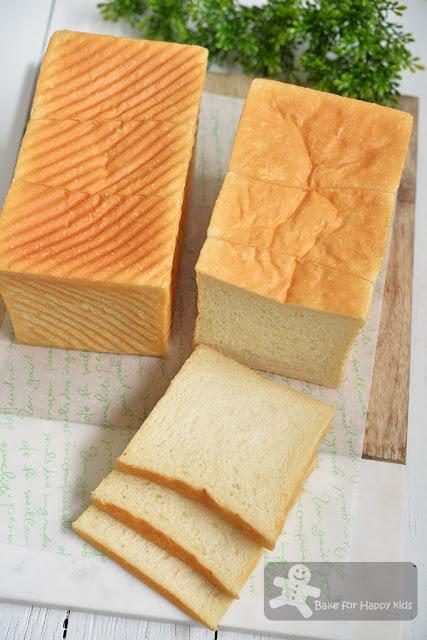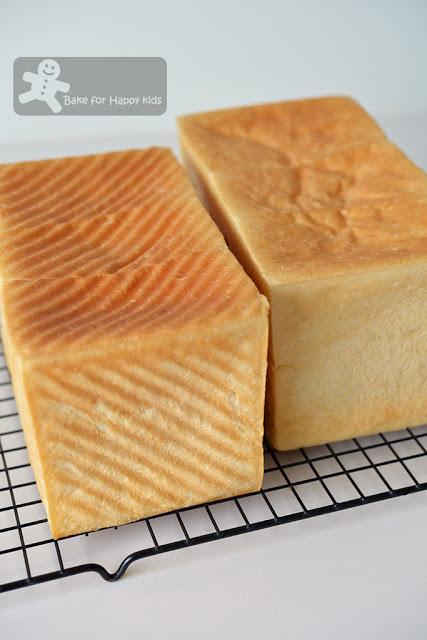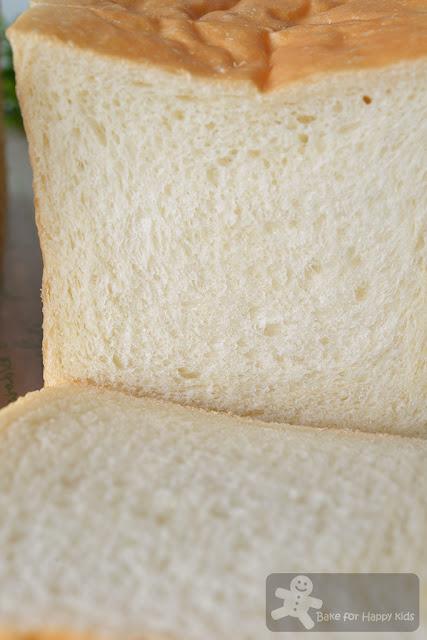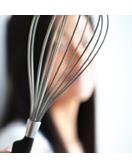As an enthusiastic baker, I really enjoy baking and exploring new baking recipes.
As a mum, I really enjoy cooking and baking for my family.
As a Blogger, Instagrammer or a Facebook user, I really enjoyed sharing good recipes that I have truly tried and tested.
And I hope that you will understand that this is my hobby. I have gained nothing but just plain happiness by sharing good recipes and baking tips!
Why am I saying this? When I highly recommended an extremely soft vegan white sandwich bread recently at here, I have gained many appreciative readers who thank me for sharing a fantastic recipe and also some who said the recipe is nothing special because most breads especially the supermarket ones are also soft and vegan! Yes that most artisan crusty breads and most supermarket sandwich breads do not contain eggs, milk and butter but clearly, these people don't know that...
1) Vegan foods are animal friendly and also good for people who are allergy to eggs and dairy products. They are not gluten free or any healthy food!!! Please be clear of what you are after!
2) Artisan breads (with NO milk, eggs and butter) are typically crusty and they are never as soft and fluffy like most Asian style sandwich breads. Interestingly (especially to me), this vegan sandwich bread recipe at here without the use of any eggs, milk and butter can produce so soft and fluffy texture that is nothing at all like the artisan breads.
3) Most supermarket soft sandwich breads (with NO milk, eggs and butter) are made with preservatives, bread improver, economical cheap oil that might contain high amount of trans fat or saturated fat and also additives in the form of numbers that we can never decipher. Obviously, home baked breads are never made with any unknown ingredients!
4) Most home baked soft breads are tastier than commercially made breads because home bakers like me are willing to add good quality eggs, milk and butter into our loaves and most cost-cutting companies don't!!!
So, please... If you have not tasted home baked breads that are so freshly baked, real, soft and delicious before, please do not try to act smart by saying what I shared is worthless!!! If you choose not to believe what I say or recommend, it's ok. It's your loss, not mine :)
For all who appreciate, I hope that I don't sound like I'm whinging :p as I just to emphasize my good intention of sharing good recipes. Not to worry. I know that home cooking and baking are beneficial to all and I won't stop sharing my good recipes because of some silly comments :)
So, here I'm sharing another highly recommended recipe again... Proudly presenting this third fantastic Japanese Shokupan condensed milk sandwich bread recipe!!! It is highly recommended because it is fully loaded with milk and very moist and chewy with milky soft crust. Yum!!!

Another Japanese Shokupan condensed milk sandwich bread
This one is extra milky with condensed milk and milk.
Very YUMMY with chewy crumbs and milky soft crust
I love baking and exploring Shokupan recipes and had highly recommended really good recipes before and they are:
1) Very Moist and Soft Japanese Shokupan at here
It uses un-scaled pasteurised (fresh, not UHT) milk plus a mixture of oil and butter to yield a slightly dense bread but very moist and soft.
2) Super Soft White Crust Japanese Shokupan at here
These super duper white crusted breads are awesomely soft because they are baked with lower oven temperature.
3) Japanese Shokupan Condensed Milk Sandwich Bread - Recipe One at here
It uses milk powder and condensed milk to yield an ultra soft, extremely moist and nice chewy perfect square bread. Very very very delicious!!!
4) Japanese Shokupan Condensed Milk Sandwich Bread - Recipe Two at here
It uses a substantial amount of condensed milk to yield a delicious white milky chewy bread that can retains its moisture very well.
Then, I have found another condensed milk Shokupan recipe!!!
Shokupan? For those who don't know, Shokupan 食パン means "plain bread" in Japanese and they are commonly available in Japan. Is Shokupan the same as our common sandwich breads? Yes and no! YES because they do taste like our daily white sandwich breads and NO because they are typically milky white and extremely soft due to the addition of milk and most commercially made sandwich breads especially the non-Asian ones don't.
Unlike the rest of the shokupan recipes that I have mentioned earlier, this Japanese Shokupan Condensed Milk Sandwich Bread - Recipe Three contains a mixture of condensed milk and milk to yield fine compact crumbs and also soft milky crust that is delicious with very lovely extra extra extra milky taste. HIGHLY RECOMMENDED too!
Now, I can say that I've triple-triple-triple confirmed my condensed milk bread baking theory at here. LOL!!!

Love love love the extra extra extra milky taste of these shokupan

Love love love its slightly compact, extra moist, extra fine and extra milky crumbs too!
Here's a video showing how I baked these lovely sandwich breads and you will see that this bread dough is very easy to handle! So easy that I don't even need any flour to dust my hands, rolling pin and rolling surfaces. And the dough is so milky white and smooth like baby bottom!!! Oh! I simply love love love this recipe! LOL!
Here's the recipe that is adapted from Cookpad
Make two 10 x 20 cm or 450g loaves
475g pasteurised milk, fresh milk not UHT, lukewarm*80g condensed milk, at room temperature
650g bread flour with about 12% protein
8g salt
50g unsalted butter, soften at room temperature
2 tsp instant dry yeast
*The milk in this recipe doesn't require scalding but need to be lukewarm or at least at room temperature for efficient proving.
extra butter or vegetable oil spray, if required to grease the loaf pans
extra bread flour for dusting if required but usually not necessary!If you are using a breadmaker to knead and prove, add all ingredients into the breadmaker according to this order. Use "dough" setting to mix and knead dough for 30 mins or until the dough is smooth and elastic and allow the dough to prove for 1 hr.
If you are using an electric mixer with an hook attachment to knead, combine all ingredients except butter in the mixing bowl and mix at low speed until a soft dough forms. Then, knead in the butter until incorporated. Continue to knead at low speed for at least 25 mins or until the dough is smooth and elastic. It is important that the dough has to be elastic and stretchy. Cover the dough and allow the dough to prove in a warm and humid place for about 1 hr or until doubled in size.
To shape the dough into bread loaf:
Grease 10 x 20 cm loaf pans with butter or vegetable oil spray. Divide dough into into 6 equal portions if you are making 2 loaves or 3 if you are making 1. Shape each portion of dough into smooth balls. Allow them to rest at room temperature for about 10 mins.Using a lightly floured rolling pin, roll each portion into long and flat oval shape (about 20 cm) on a lightly floured non-stick surface. Use your fingers to pick one shorter side of the dough and tuck and roll the dough like a Swiss roll. Use the rolling pin to flatten and roll the dough into a long rod shape. Then, pick one shorter side of the dough and roll it like a Swiss roll again. Repeat this rolling step with the remaining portions of dough.
Place three rolled dough with their seams side down into the each prepared pan. Press the top of the dough lightly to form an even surface. Allow the dough to prove in a warm and humid place for another 1 hr or until the dough is going to reach the maximum height of the loaf pan.
Bake bread in a preheated 180°C (350°F) oven for 25 mins or until the bread are thoroughly baked. Remove bread from the loaf pan and transfer immediately onto a wire rack to cool completely before serving.
To store, wrap tightly in plastic wrap and keep at room temperature for 2-3 days or freeze in serving portions for 2-3 months.
Happy BakingPlease support me and like me at Facebook...

